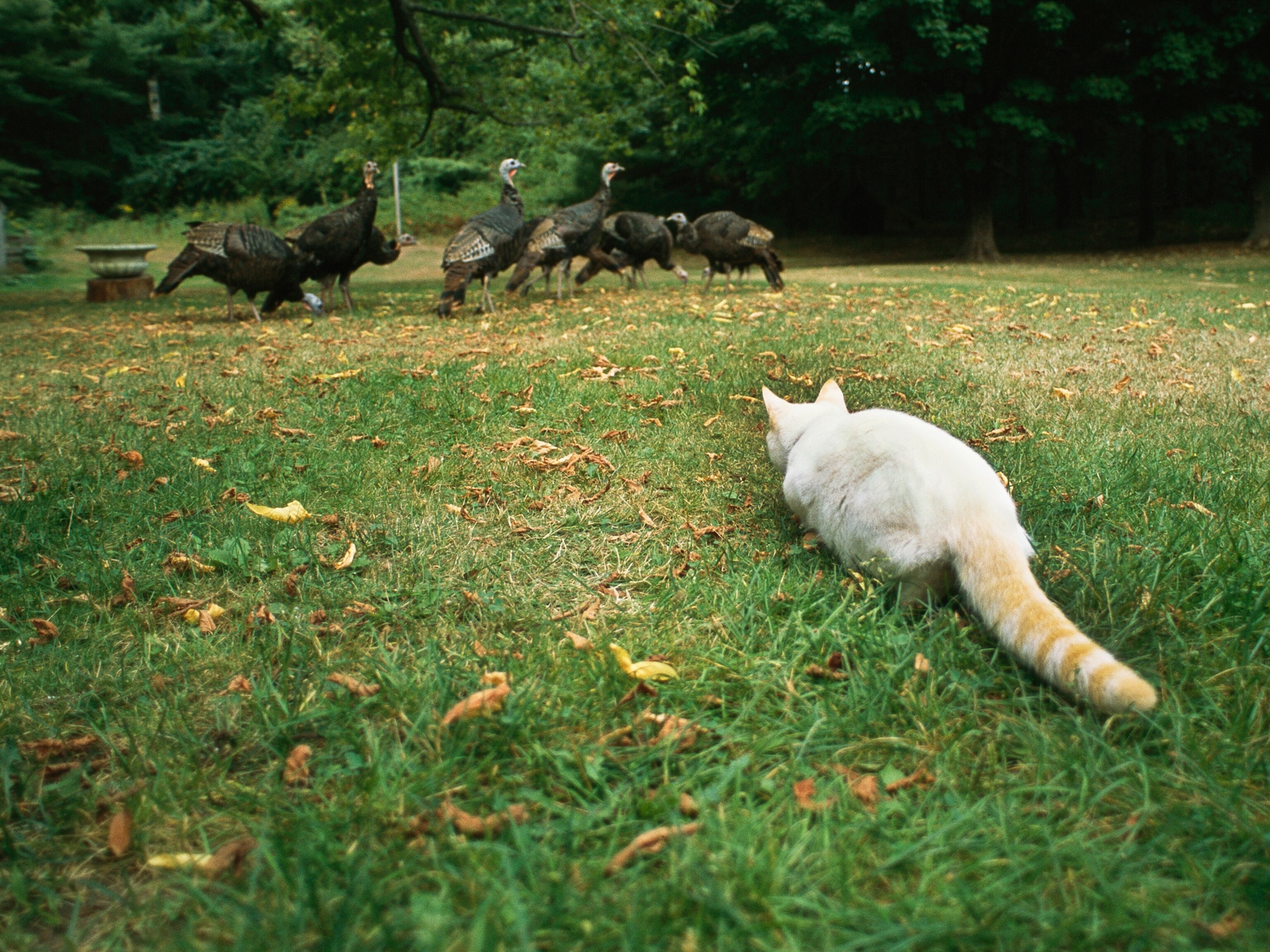
Hello Kitty! Please Don’t Kill Me!
Cats kill billions of birds and mammals every year, new study says.
Maybe the butler didn't do it. But the cat probably did.
A new study, published January 29 in Nature Communications, estimates that cats are responsible for killing billions of birds and mammals in the continental U.S. every year. The estimate: 1.4 billion to 3.7 billion bird victims and 6.9 billion to 20.7 billion mammals. Peter Marra, the senior author of the study, called the results "stunning." (Watch: A house cat's point of view.)
"For the last 20, 30, 40 years," he said, "the number that has been batted around as a max was about 500 million."
And there are a lot of potential feline killers. Over 80 million pet cats reside in American homes and as many as 80 million more stray and feral cats survive outside.
The authors found that the stray and feral cats are responsible for most of the kills. But pets aren't exactly innocent: They are blamed for about a third of the bird action. The study also discovered that the cats mainly kill native species like chipmunks and house wrens, not invasive pests like the Norway rat (Rattus norvegicus). (Video: Secret lives of cats.)
The study is part of a larger effort to quantify the threats to birds, said Marra, an ecologist with the Migratory Bird Center at the Smithsonian Conservation Biology Institute in Washington, D.C. Cats happened to be the first threat they considered. Plans are to look at other threats related to human activity: wind turbines, buildings, automobiles, and pesticides. The research is important, Marra said, because "a lot of these causes of mortality may be reversible." He hopes the study will aid policymakers and help cat owners realize "cats are having a larger impact than we thought."
So what can be done about all these wild killer cats?
Current efforts to rein in America's feral cats are insufficient. While a feral cat management technique called Trap-Neuter-Return (TNR) stops some cats from reproducing, it doesn't stop those cats from preying on wildlife. The Humane Society of the United States supports TNR as part of the solution, but acknowledges that it will not noticeably reduce the cat population. John Hadidian, a senior scientist with the society, notes that TNR only reaches about two million cats, and it can be "cumbersome and expensive." He hopes that the attention from papers like this will encourage novel approaches like oral contraceptives for cats.
To some cat observers, the study news was no surprise. Economist Gareth Morgan made headlines around the world last week when he launched a proposal to rid New Zealand of cats. Morgan, whose website features a cartoon kitten announcing "I love to kill," believes that pet cats are endangering New Zealand's birds. While his website advocates a New Zealand without cats, and he would like people to make their current cat their last, he says he really wants cats to be regulated the way dogs are. He points to laws enacted in Western Australia as an example: Cats must be registered, neutered, and microchipped. The microchip, a small identifying device embedded under the skin, can be detected by vets or authorities so they can reunite lost pets with their owners and differentiate between pets and strays. "I'm not saying they should kill their cats," Morgan said. "If they are really into cats, that's fine, but you must control them."
Morgan admits this is "an emotional issue" in a country where nearly half of the households have at least one feline. "It's not that cat owners don't care," Morgan said, "it's that they haven't thought about it."
Meanwhile, people in the U.S. aren't likely to turn on cats either. Cat ownership has increased from about 56 million pet cats in the mid-1990s to the current count of 80 million. Though cats are viewed as both a conservation threat and a human companion, the Humane Society's Hadidian thinks common ground can be reached. "Both the bird people and the cat people want the same thing," he said, "fewer cats outdoors."





